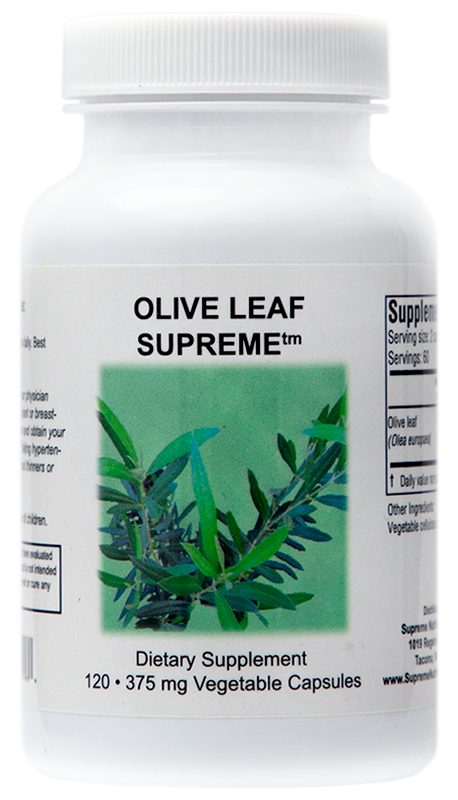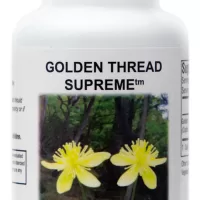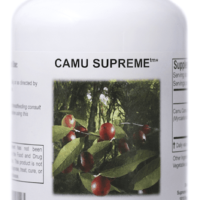Description
Olive leaf (Olea europaea) has been used as a therapeutic remedy for several thousand years or more but has only become popular in the US market over the last 25 years. Most commercially available olive leaf is in extract form. Being oriented toward using whole, natural-state herbs whenever possible, we attempt to find products in a whole, dried form (as opposed to an extract). By doing this, the herb retains all of the components in the same ratio found in nature (as close as possible considering it is dried). Extraction, standardization etc. are often used to maximize one component of the product, but often all the components work synergistically [1].
With these goals in mind, we were able to source high quality, dried, whole olive leaf which our team of accomplished applied-kinesiology-practicing physicians found performed better, in our opinion, than the extracts which we tested. Olive leaf has many known therapeutic uses.
1) Olive leaf is a great broad spectrum antimicrobial with published studies showing it has antiviral, antibacterial, antifungal, and antiparasitic effects [2, 3, 4]. It may stimulate phagocyotosis, prevent viral shedding and even penetrate infected cells and stop viral replication [5].
2) It can act as a vasodilator, increase production of nitric oxide, inhibit platelet aggregation, and decrease oxidation of LDL, in addition to exerting other cardio protective effects [6, 7]. Olive leaf, at the dosage regimen of 500 mg twice daily, was similarly effective in lowering systolic and diastolic blood pressures in subjects with stage-1 hypertension as Captopril, given at its effective dose of 12.5–25 mg twice daily. It also lowered triglycerides in patients [8].
3) It is one of the strongest antioxidants on the market with an Oxygen radical absorbance capacity (ORAC) value of 7,608, which puts it as having higher anti-oxidant values than green tea, grape seed, blueberries, blackberries, garlic, and many other high anti-oxidant foods/supplements [9]. It also doesn’t contain potentially harmful theobromine as in chocolate or theophylline in tea. It also contains a higher ORAC value than most other medicinal herbs. The antioxidant activity also has potential uses to help against cancer [10].
4) It can lower blood sugar and thus be a complement to other diabetes treatments [11].
5) It can increase T3 levels and decrease circulating TSH levels, thus helping thyroid function.
6) A compound found in Olive leaf inhibits xanthine oxidase thereby decreasing the buildup of uric acid [12].
7) It also has significant anti-inflammatory properties and can be very useful in a number of conditions as a result [13]. One of the anti-inflammatory properties is due to its superoxide dismutase (SOD)-like activity [1].
8) Studies suggest that postmenopausal women could be a target population for the intake of olive phenolics in order to prevent age-related and oxidative stress-related processes such as osteoporosis [14].
Contraindications:
Do not use during pregnancy and lactation. Also use caution and your doctor’s approval if on hypertension medication, blood thinners and diabetic drugs. It is best taken with food.
If you already use olive leaf (extract or whole) be sure to test this versus your current brand or, if you are not currently using it, give this a try.
Dosage:
1-2 caps three times daily.
Citations:
1. Lee, Ok-Hwan, and Boo-Yong Lee. “Antioxidant and Antimicrobial Activities of Individual and Combined Phenolics in Olea Europaea Leaf Extract.” Bioresource Technology 101.10 (2010): 3751-754. Web.
2. Micol, V., N. Caturla, L. Perezfons, V. Mas, L. Perez, and A. Estepa. “The Olive Leaf Extract Exhibits Antiviral Activity against Viral Haemorrhagic Septicaemia Rhabdovirus (VHSV).” Antiviral Research 66.2-3 (2005): 129-36. Web.
3. Pereira, Ana Paula, Isabel Cfr Ferreira, Filipa Marcelino, Patricia Valentão, Paula B. Andrade, Rosa Seabra, Leticia Estevinho, Albino Bento, and José Alberto Pereira. “Phenolic Compounds and Antimicrobial Activity of Olive (Olea Europaea L. Cv. Cobrançosa) Leaves.” Molecules 12.5 (2007): 1153-162. Web.
4. Kyriazis JD, Aligiannis N, Polychronopoulos P, Skaltsounis AL, Dotsika E. Leishmanicidal activity assessment of olive tree extracts. Phytomedicine 2013; 20 (3-4): 275-81.
5. Khan, Yaseen, Siddharth Panchal, Niraj Vyas, Amee Butani, and Vimal Kumar. “Olea Europaea: A Phyto-Pharmacological Review.”Pharmacognosy Reviews 1.1 (2007): 112-16. Web.
6. Khayyal, Mohamed, Mona El-Ghazaly, Dalai Abdallah, Noha Nassar, Samuel Okpanyi, and Matthias-Heinrich Kreuter. “Blood Pressure Lowering Effect of an Olive Leaf Extract {Olea Europaed) in L-NAME Induced Hypertension in Rats.” Arzneimittelforschung 52.11 (2002): 797-802. Web.
7. Ranalli, Alfonso, Stefania Contento, Lucia Lucera, Moira Di Febo, Donato Marchegiani, and Vittoria Di Fonzo. “Factors Affecting the Contents of Iridoid Oleuropein in Olive Leaves ( Olea Europaea L.).” Journal of Agricultural and Food Chemistry J. Agric. Food Chem. 54.2 (2006): 434-40. Web.
8. Susalit, Endang, Nafrialdi Agus, Imam Effendi, Raymond R. Tjandrawinata, Dwi Nofiarny, Tania Perrinjaquet-Moccetti, and Marian Verbruggen. “Olive (Olea Europaea) Leaf Extract Effective in Patients with Stage-1 Hypertension: Comparison with Captopril.” Phytomedicine 18.4 (2011): 251-58. Web.
9. Wojcikowski, Ken, Lesley Stevenson, David Leach, Hans Wohlmuth, and Glenda Gobe. “Antioxidant Capacity of 55 Medicinal Herbs Traditionally Used to Treat The Urinary System: A Comparison Using A Sequential Three-Solvent Extraction Process.” The Journal of Alternative and Complementary Medicine 13.1 (2007): 103-10. Web.
10. Marino, Simona, Carmen Festa, Franco Zollo, Antonella Nini, Lina Antenucci, Gennaro Raimo, and Maria Iorizzi. “Antioxidant Activity and Chemical Components as Potential Anticancer Agents in the Olive Leaf (Olea Europaea L. Cv Leccino.) Decoction.” ACAMC Anti-Cancer Agents in Medicinal Chemistry 14.10 (2014): 1376-385. Web.
11. Eidi, A., M. Eidi, and R. Darzi. “Antidiabetic Effect of Olea Europaea L. in Normal and Diabetic Rats.” Phytotherapy Research Phytother. Res.23.3 (2009): 347-50. Web.
12. Flemmig, J., K. Kuchta, J. Arnhold, and H. Rauwald. “Olea Europaea L. Leaf (Ph. Eur.) Extract as Well as Several of Its Single Phenolics Inhibit the Gout-related Enzyme Xanthine Oxidase.” Planta Med Planta Medica76.12 (2010): n. pag. Web.
13. García-Villalba, R., M. Larrosa, S. Possemiers, F. A. Tomás-Barberán, and J. C. Espín. “Bioavailability of Phenolics from an Oleuropein-rich Olive (Olea Europaea) Leaf Extract and Its Acute Effect on Plasma Antioxidant Status: Comparison between Pre- and Postmenopausal Women.” European Journal of Nutrition Eur J Nutr 53.4 (2013): 1015-027. Web.
14. Silva, Branca M., PatrÍcia ValentÃo, Rosa M. Seabra, JosÉ A. Pereira, Alberto Dias, Paula B. Andrade, Federico Ferreres, and Julieta Meirinhos. “Analysis and Quantification of Flavonoidic Compounds from Portuguese Olive ( Olea Europaea L.) Leaf Cultivars.” Natural Product Research 19.2 (2005): 189-95. Web.








